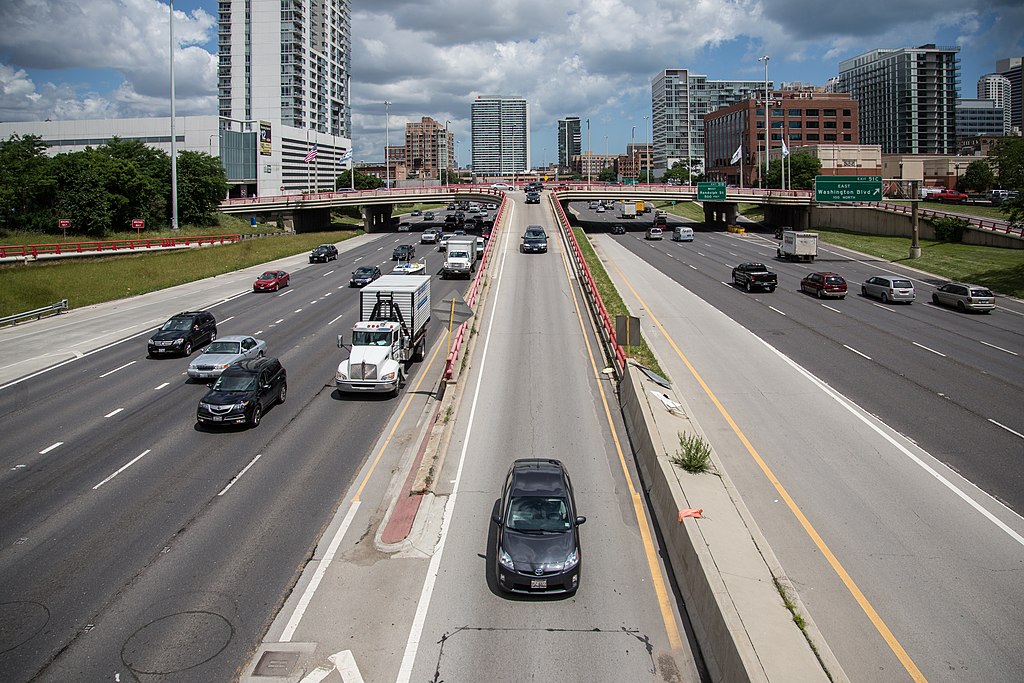A survey by NextGen Highways has found that 79% of Minnesota voters support siting new transmission along highways. The survey question read: “Thinking about where electric transmission lines are built, would you prefer they be built on private land like farms, forests or neighborhoods, or on existing infrastructure corridors, like power lines, highways or rail rights-of-way?”
NextGen Highways promotes the use of highways and other existing rights-of-way for transmission and communications infrastructure.
More broadly, the advocacy group “supports siting of transmission anywhere it makes sense for the utility/developer and other stakeholders” said Executive Director Randy Satterfield. Existing infrastructure corridors, such as highways and existing transmission rights-of-way, he said, “should be options” for utilities and developers to consider for transmission lines, adding that “siting on existing corridors can help speed the permitting process and impact fewer private landowners.”
A study last year for the Minnesota Department of Transportation co-led by NextGen Highways Founder Morgan Putnam assessed the feasibility of buried high-voltage direct current (HVDC) transmission.
Transmission needs
Transmission is needed to carry wind power from the central U.S. eastward, according to a major preliminary finding from a U.S. Department of Energy (DOE) study, for the U.S. to reach a high level of renewable generation at least cost. Another draft DOE study projects that the U.S. needs 47,000 more GW-miles of transmission by 2035 for a cleaner grid, an amount representing 57% growth over the current level of transmission.
As part of these needs, thousands of relatively short transmission spur lines will be needed to connect new utility-scale solar, wind and storage projects to the existing transmission grid.
The U.S. Government is pursuing research and development of advanced construction methods for undergrounding high-voltage and high-capacity AC and DC cables, said the White House in a report last November, noting that enabling transmission along the 48,000-mile interstate highway system, plus 140,000 miles of freight rail lines, could “accelerate siting and reduce the costs” of adding transmission.
HVDC costs
The feasibility study co-led by the founder of NextGen Highways determined that buried HVDC transmission is “comparable in cost” to overhead AC transmission. The cost analysis compared the costs per GW-mile of nine overhead AC lines in the Midwest’s MISO grid region that are over 100 miles long, to the costs per GW-mile for three buried HVDC lines of lengths ranging from 175 to 350 miles.
Advocacy plans
NextGen Highways has received funding from Breakthrough Energy to develop state and national advocacy coalitions, beginning in Minnesota, to promote transmission along rights-of-way. The organization is targeting states where there is both “a need for electric transmission development” and where state regulations and policies “prohibit the use of these rights-of-way.”
Breakthrough Energy was founded by Bill Gates, the world’s fourth-richest person, and aims “to inspire the world to develop and scale the critical solutions we need to reach net-zero emissions,” its website says. Its division Breakthrough Energy Ventures counts a number of other wealthy individuals as board members or investors.
This content is protected by copyright and may not be reused. If you want to cooperate with us and would like to reuse some of our content, please contact: editors@pv-magazine.com.








By submitting this form you agree to pv magazine using your data for the purposes of publishing your comment.
Your personal data will only be disclosed or otherwise transmitted to third parties for the purposes of spam filtering or if this is necessary for technical maintenance of the website. Any other transfer to third parties will not take place unless this is justified on the basis of applicable data protection regulations or if pv magazine is legally obliged to do so.
You may revoke this consent at any time with effect for the future, in which case your personal data will be deleted immediately. Otherwise, your data will be deleted if pv magazine has processed your request or the purpose of data storage is fulfilled.
Further information on data privacy can be found in our Data Protection Policy.